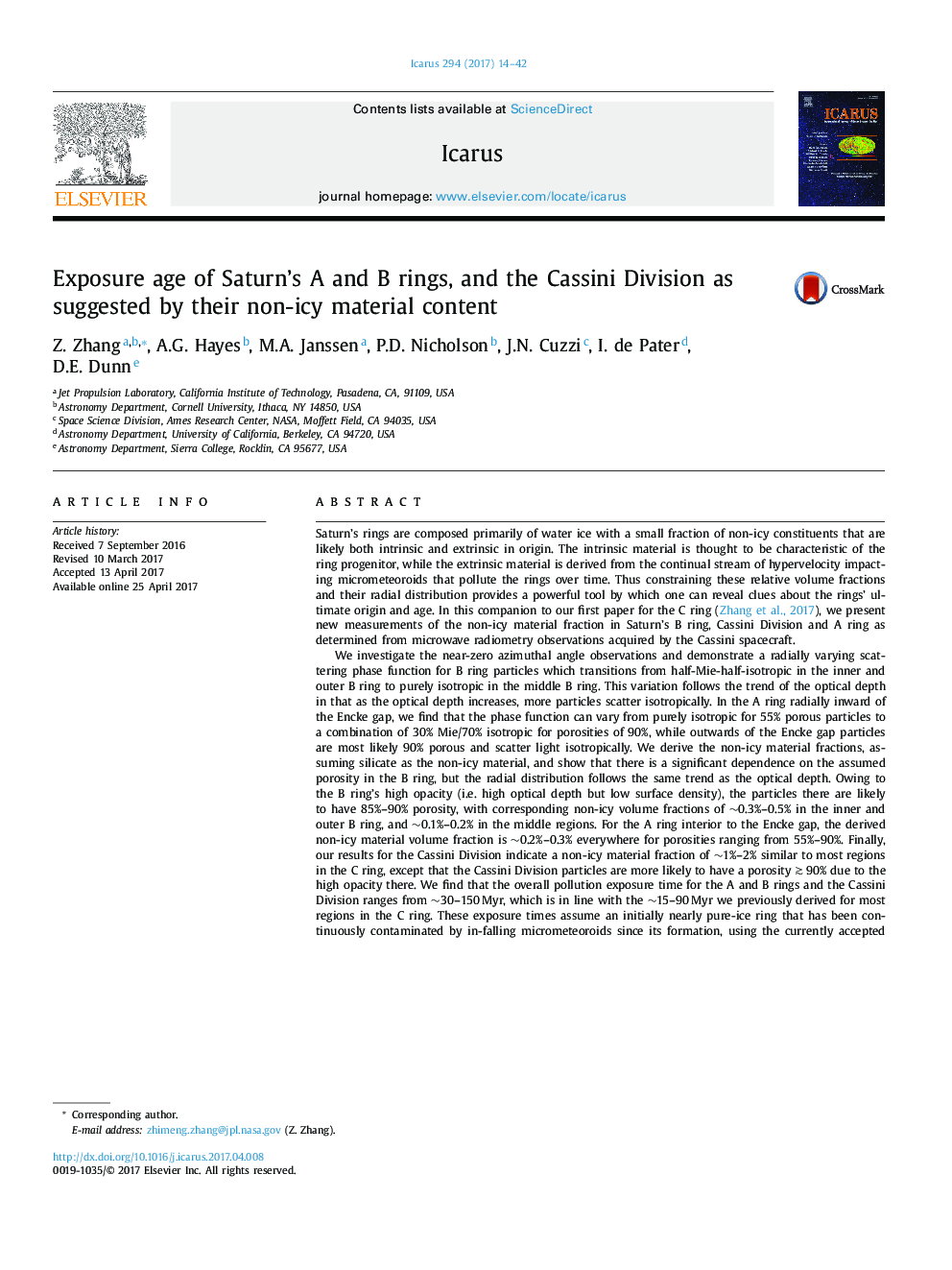| Article ID | Journal | Published Year | Pages | File Type |
|---|---|---|---|---|
| 5487379 | Icarus | 2017 | 29 Pages |
Abstract
We investigate the near-zero azimuthal angle observations and demonstrate a radially varying scattering phase function for B ring particles which transitions from half-Mie-half-isotropic in the inner and outer B ring to purely isotropic in the middle B ring. This variation follows the trend of the optical depth in that as the optical depth increases, more particles scatter isotropically. In the A ring radially inward of the Encke gap, we find that the phase function can vary from purely isotropic for 55% porous particles to a combination of 30% Mie/70% isotropic for porosities of 90%, while outwards of the Encke gap particles are most likely 90% porous and scatter light isotropically. We derive the non-icy material fractions, assuming silicate as the non-icy material, and show that there is a significant dependence on the assumed porosity in the B ring, but the radial distribution follows the same trend as the optical depth. Owing to the B ring's high opacity (i.e. high optical depth but low surface density), the particles there are likely to have 85%-90% porosity, with corresponding non-icy volume fractions of â¼0.3%-0.5% in the inner and outer B ring, and â¼0.1%-0.2% in the middle regions. For the A ring interior to the Encke gap, the derived non-icy material volume fraction is â¼0.2%-0.3% everywhere for porosities ranging from 55%-90%. Finally, our results for the Cassini Division indicate a non-icy material fraction of â¼1%-2% similar to most regions in the C ring, except that the Cassini Division particles are more likely to have a porosity â³Â 90% due to the high opacity there. We find that the overall pollution exposure time for the A and B rings and the Cassini Division ranges from â¼30-150 Myr, which is in line with the â¼15-90 Myr we previously derived for most regions in the C ring. These exposure times assume an initially nearly pure-ice ring that has been continuously contaminated by in-falling micrometeoroids since its formation, using the currently accepted value of the micrometeoroid flux (Grün et al., 1985; Cuzzi and Estrada, 1998; Kempf et al., 2013; Altobelli et al., 2015). Our results here, taken together with our previous findings for the C ring, further support the idea that Saturn's rings may be â²150 Myr old suggesting an origin scenario in which the rings are derived from the relatively recent breakup of an icy moon.
Related Topics
Physical Sciences and Engineering
Earth and Planetary Sciences
Space and Planetary Science
Authors
Z. Zhang, A.G. Hayes, M.A. Janssen, P.D. Nicholson, J.N. Cuzzi, I. de Pater, D.E. Dunn,
